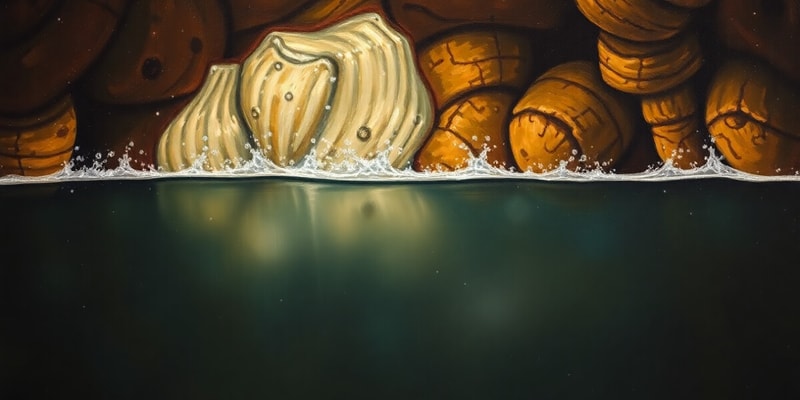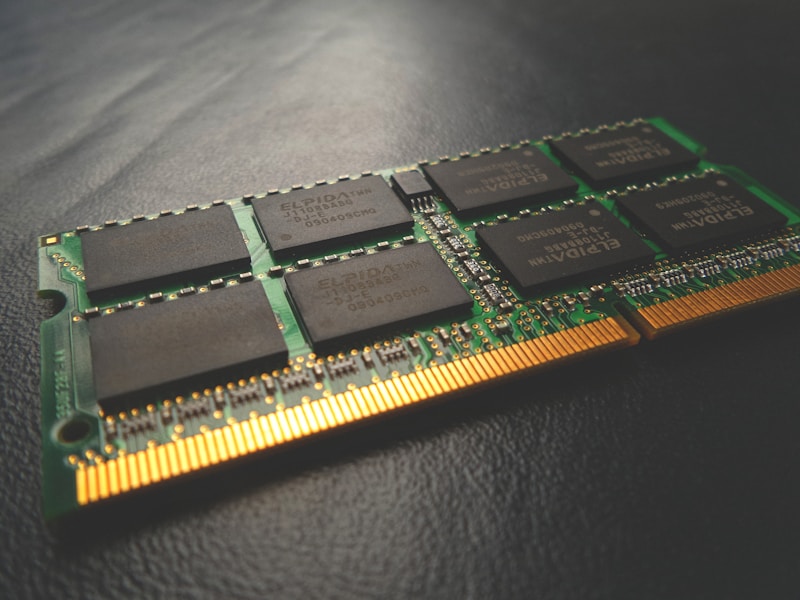Podcast
Questions and Answers
The sodium pump facilitates the movement of Na+ from the interstitial space to the epithelial cells.
The sodium pump facilitates the movement of Na+ from the interstitial space to the epithelial cells.
False
The Na/Glu symporter utilizes primary active transport to move glucose into epithelial cells.
The Na/Glu symporter utilizes primary active transport to move glucose into epithelial cells.
False
The glucose uniporter facilitates the movement of glucose into epithelial cells via facilitated diffusion.
The glucose uniporter facilitates the movement of glucose into epithelial cells via facilitated diffusion.
False
The concentration of glucose is higher in the lumen of the intestine compared to the epithelial cells.
The concentration of glucose is higher in the lumen of the intestine compared to the epithelial cells.
Signup and view all the answers
The Na/Glu symporter is located on the apical membrane of epithelial cells.
The Na/Glu symporter is located on the apical membrane of epithelial cells.
Signup and view all the answers
The interstitial space has a higher concentration of glucose compared to the lumen of the intestine.
The interstitial space has a higher concentration of glucose compared to the lumen of the intestine.
Signup and view all the answers
Amino acids can be absorbed through Na/amino acid transporters.
Amino acids can be absorbed through Na/amino acid transporters.
Signup and view all the answers
The Na+ concentration gradient is maintained by the glucose uniporter.
The Na+ concentration gradient is maintained by the glucose uniporter.
Signup and view all the answers
Water can only be absorbed when there is an osmotic gradient present.
Water can only be absorbed when there is an osmotic gradient present.
Signup and view all the answers
Tight junctions in the small intestine completely prevent the passage of water.
Tight junctions in the small intestine completely prevent the passage of water.
Signup and view all the answers
The Na+/Glucose cotransporter plays a role in the uptake of glucose but has no effect on water absorption.
The Na+/Glucose cotransporter plays a role in the uptake of glucose but has no effect on water absorption.
Signup and view all the answers
In healthy individuals, water absorption in the kidneys occurs in a regulated manner.
In healthy individuals, water absorption in the kidneys occurs in a regulated manner.
Signup and view all the answers
H2O can flow against an osmotic gradient if energy is expended.
H2O can flow against an osmotic gradient if energy is expended.
Signup and view all the answers
Bulk absorption of water primarily occurs in the gut and kidney.
Bulk absorption of water primarily occurs in the gut and kidney.
Signup and view all the answers
The bulk uptake of water is considered a regulated process under normal physiological conditions.
The bulk uptake of water is considered a regulated process under normal physiological conditions.
Signup and view all the answers
Osmotic gradients can be maintained by the movement of solutes across cell membranes.
Osmotic gradients can be maintained by the movement of solutes across cell membranes.
Signup and view all the answers
The biggest medical breakthrough of the 20th Century relates to the regulation of glucose absorption only.
The biggest medical breakthrough of the 20th Century relates to the regulation of glucose absorption only.
Signup and view all the answers
The absorption of large volumes of water from the lumen to interstitial fluid occurs via transcellular pathways exclusively.
The absorption of large volumes of water from the lumen to interstitial fluid occurs via transcellular pathways exclusively.
Signup and view all the answers
AQP-1 is always present in the apical membrane of cells in the collecting duct.
AQP-1 is always present in the apical membrane of cells in the collecting duct.
Signup and view all the answers
ADH increases the production of dilute urine in the collecting duct.
ADH increases the production of dilute urine in the collecting duct.
Signup and view all the answers
The primary mechanism by which glucose is absorbed in the intestine involves Na+/Glucose cotransporters.
The primary mechanism by which glucose is absorbed in the intestine involves Na+/Glucose cotransporters.
Signup and view all the answers
In the case of acute diarrhea, a significant increase in water reabsorption occurs.
In the case of acute diarrhea, a significant increase in water reabsorption occurs.
Signup and view all the answers
Oral rehydration therapy can be effectively achieved using only water and sodium.
Oral rehydration therapy can be effectively achieved using only water and sodium.
Signup and view all the answers
The Na+/glucose co-transporter uses energy from the sodium concentration gradient to allow glucose to enter the cell from the gut.
The Na+/glucose co-transporter uses energy from the sodium concentration gradient to allow glucose to enter the cell from the gut.
Signup and view all the answers
Water can only traverse tight junctions in the kidney collecting duct due to the presence of leaky tight junctions.
Water can only traverse tight junctions in the kidney collecting duct due to the presence of leaky tight junctions.
Signup and view all the answers
The osmotic gradient created by sodium and glucose leads to the movement of water from low osmolarity to high osmolarity areas.
The osmotic gradient created by sodium and glucose leads to the movement of water from low osmolarity to high osmolarity areas.
Signup and view all the answers
In kidney tubules, water absorption is predominantly via the transcellular pathway.
In kidney tubules, water absorption is predominantly via the transcellular pathway.
Signup and view all the answers
ADH levels are high when an individual is well hydrated, leading to increased water reabsorption in the collecting duct.
ADH levels are high when an individual is well hydrated, leading to increased water reabsorption in the collecting duct.
Signup and view all the answers
Glucose enters the interstitial space via a glucose co-transporter.
Glucose enters the interstitial space via a glucose co-transporter.
Signup and view all the answers
The major function of aquaporins in the kidney is to regulate the movement of sodium ions.
The major function of aquaporins in the kidney is to regulate the movement of sodium ions.
Signup and view all the answers
Bulk water absorption occurs in both the gut and kidney tubules due to permeable tight junctions.
Bulk water absorption occurs in both the gut and kidney tubules due to permeable tight junctions.
Signup and view all the answers
During regulated water absorption, the presence of ADH increases the number of aquaporins in the apical membrane of collecting duct epithelial cells.
During regulated water absorption, the presence of ADH increases the number of aquaporins in the apical membrane of collecting duct epithelial cells.
Signup and view all the answers
Bulk uptake of water in the gut occurs through facilitated diffusion across cell membranes.
Bulk uptake of water in the gut occurs through facilitated diffusion across cell membranes.
Signup and view all the answers
The absorption of Na+ does not influence the movement of H2O.
The absorption of Na+ does not influence the movement of H2O.
Signup and view all the answers
Cl- follows Na+ to maintain electroneutrality during absorption.
Cl- follows Na+ to maintain electroneutrality during absorption.
Signup and view all the answers
Absorption of solutes solely depends on the presence of H2O in the interstitium.
Absorption of solutes solely depends on the presence of H2O in the interstitium.
Signup and view all the answers
The movement of Na+ creates an osmotic gradient that facilitates water absorption.
The movement of Na+ creates an osmotic gradient that facilitates water absorption.
Signup and view all the answers
An electrical imbalance caused by Na+ does not affect Cl- movement.
An electrical imbalance caused by Na+ does not affect Cl- movement.
Signup and view all the answers
Absorption mechanisms primarily involve passive transport of Na+.
Absorption mechanisms primarily involve passive transport of Na+.
Signup and view all the answers
Water and Cl- are only absorbed when Na+ is present in the lumen.
Water and Cl- are only absorbed when Na+ is present in the lumen.
Signup and view all the answers
Cells absorb Na+, Cl-, and H2O independently of each other.
Cells absorb Na+, Cl-, and H2O independently of each other.
Signup and view all the answers
The primary function of Na+ in solute absorption is to create an osmotic gradient.
The primary function of Na+ in solute absorption is to create an osmotic gradient.
Signup and view all the answers
Absorption occurs without the need for maintaining electroneutrality.
Absorption occurs without the need for maintaining electroneutrality.
Signup and view all the answers
Study Notes
Glucose Absorption
- Glucose moves from the lumen of the intestine to the epithelial cells and into interstitial space via active transport and facilitated diffusion.
- Sodium-glucose symporter (SGLT) uses the energy from sodium moving down its electrochemical gradient to drive glucose against its concentration gradient from the lumen into epithelial cell.
- Glucose uniporter facilitates movement of glucose down its concentration gradient from epithelial cells into interstitial space.
- Sodium-potassium pump maintains the electrochemical gradient for Na+ by constantly pumping it out of the cell, which requires energy.
- Sodium-glucose symporter is located in the apical membrane of the epithelial cells.
- Glucose uniporter is located in the basolateral membrane of the epithelial cells.
- Sodium-potassium pump is located in the basolateral membrane of the epithelial cells.
- Other co-transporters exist for the absorption of amino acids, folate, and other nutrients.
Water Absorption
- Water absorption occurs via paracellular and transcellular pathways.
- Paracellular pathway is a bulk absorption of water from the lumen to interstitial fluid through leaky tight junctions.
- Transcellular pathway is a regulated absorption of water from the lumen to interstitial fluid through aquaporin channels in epithelial cell membranes.
- Tight junctions in the small intestine and proximal tubules of the kidneys are leaky and permeable to water.
- Aquaporins in the collecting duct of the kidneys are regulated by ADH to control water permeability and reabsorption.
- Water is absorbed via osmotic gradient created by movement of solutes such as Na+ and Cl-.
Bulk Absorption of Water
- Occurs in the gut and kidney tubules.
- Large volume of water is absorbed via the paracellular pathway through leaky tight junctions.
Regulated Absorption of Water
- Occurs in the collecting duct of the kidneys.
- Small volume of water is absorbed via the transcellular pathway through aquaporins.
- Tight junctions are impermeable to water.
- Aquaporins are regulated by ADH (antidiuretic hormone) to control water reabsorption.
Oral Rehydration Therapy
- Oral rehydration therapy (ORT) is a life-saving treatment for dehydration, particularly from diarrhea.
- Water alone is not effective in rehydration because the interstitial fluid concentration of Na+ is too low to drive osmosis.
- ORT solutions contain glucose and sodium to facilitate the movement of water back into the body.
- Glucose acts as a co-substrate for Na+ absorption by SGLT in the gut.
- Sodium in the solution helps to create an osmotic gradient and drive water reabsorption.
Studying That Suits You
Use AI to generate personalized quizzes and flashcards to suit your learning preferences.
Related Documents
Description
This quiz explores the intricate processes of glucose absorption in the intestine. It covers mechanisms like active transport and facilitated diffusion involving sodium-glucose symporters and uniporters. Additionally, the role of the sodium-potassium pump in maintaining electrochemical gradients is highlighted.




